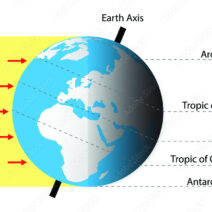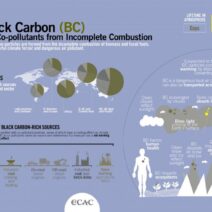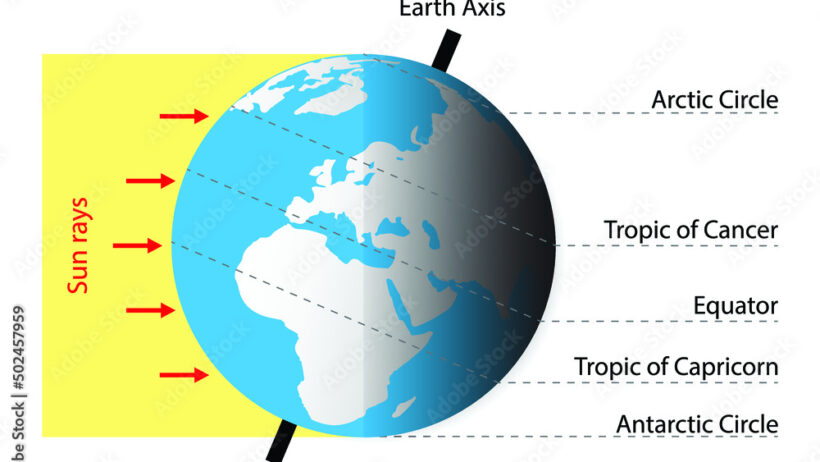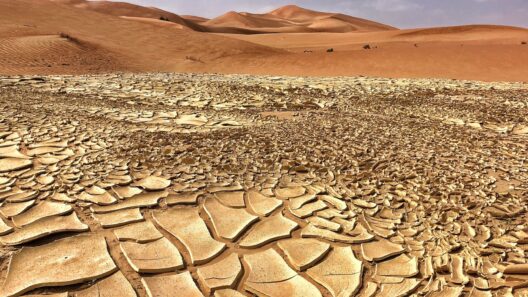Latitude is not merely a line on a map; it is the very essence that delineates climatic zones across our planet. As we traverse from the equator to the poles, we encounter dramatic shifts in temperature, precipitation, and seasonal cycles that dictate the biospheres of different regions. Understanding how latitude influences climate offers a profound insight into our world and the vital signs of its changing nature. This exploration can transform our perspective on climate dynamics and engage our curiosity about the intricate interplay between geography and meteorology.
The equator, often described as the latitudinal line at 0 degrees, is characterized by its warm, tropical climate. This region is home to lush rainforests, vibrant biodiversity, and complex ecosystems. The incessant solar radiation beamed directly onto the equator results in higher average temperatures throughout the year. This abundance of heat contributes to ample evaporation rates, resulting in considerable humidity and precipitation. Consequently, tropical regions experience distinctive wet and dry seasons, fostering a diverse array of plant and animal life that thrives in these conditions.
Moving beyond the equatorial belt, one begins to encounter the subtropics, generally defined between latitudes 23.5 degrees north and south. Here, the climate transitions from the equatorial warmth to increasingly arid conditions. The subtropical high-pressure systems are prevalent due to the descending air, leading to subtropical deserts where precipitation is sparse. The deserts of the Sahara in Africa and the Sonoran in North America exemplify this climatic shift. These regions highlight the dichotomy of climate—a striking contrast between the exuberance of the equatorial rainforests and the stark desolation of desert landscapes.
As we venture further from the equator, we enter the mid-latitudes, roughly between 30 and 60 degrees north and south. This belt is characterized by a more temperate climate, which experiences four distinct seasons: spring, summer, autumn, and winter. The variability of climate in the mid-latitudes can be attributed to the influence of ocean currents and prevailing winds. The interaction of warm and cold air masses leads to dynamic weather patterns, including cyclones and anticyclones. In these regions, one can observe diverse ecosystems ranging from deciduous forests to grasslands, each adapted to the seasonal fluctuations in temperature and precipitation.
The transition to the higher latitudes brings us to the polar regions, lying above 60 degrees north and south. These areas experience an entirely different climate profile, marked by extreme cold, prolonged winters, and a brief summer. The polar climate is categorized as either tundra or ice cap, where the ground remains frozen for the majority of the year. This region’s limited solar exposure, combined with the high albedo effect of snow and ice, contributes to frigid temperatures. The biodiversity of polar regions is relatively low compared to the equator, and the organisms that inhabit these areas, such as polar bears and Arctic foxes, have adapted uniquely to survive in such harsh conditions.
One cannot overlook the impacts of climate change which are pronounced across all latitudes. Global warming is not just an abstract concept confined to the scientific literature; it manifestly alters climates from the equator to the poles. The increasing concentration of greenhouse gases traps heat in the atmosphere, which leads to rising temperatures, shifting precipitation patterns, and more extreme weather events. At the equator, the delicate balance of ecosystems faces threats from deforestation and habitat loss. Meanwhile, in the polar regions, glacial retreat and melting ice caps signify the profound extent of climate disruption.
In addition to geographical impacts, cultural interconnections emerge from the shifting climates attributable to latitude. Indigenous communities around the world have traditionally relied on local ecosystems for sustenance and shelter. For instance, the Inuit in the Arctic have adapted to life in extreme cold, while various tribes in tropical rainforests harness the rich biodiversity for food and medicine. As climate change continues to cause unprecedented shifts, these traditional lifestyles and cultural practices face existential threats. The necessity to preserve such cultural heritage, while also nurturing the environment, makes the understanding of latitude and climate incredibly pertinent in contemporary discourse.
Furthermore, the promise of renewable energy linked to latitude cannot be ignored. Areas near the equator benefit from consistent solar energy, which can be harnessed for solar power initiatives, paving the way for sustainable electricity generation. Conversely, higher latitudes may capitalize on wind energy, particularly in regions where climatic conditions result in persistent winds. The differential climatic influences of latitude thus serve as a catalyst for innovation within the renewable energy sector, underscoring the importance of geographic considerations in our global shift towards sustainability.
In conclusion, the varying climates fostered by differences in latitude are far-reaching and impact not only environmental conditions but also cultural narratives, economic opportunities, and ecological interactions. With climate change accelerating, understanding how latitude shapes climate is more than an academic exercise; it is a necessary lens through which we can chart a path towards a sustainable future. Addressing climate issues through this multifaceted perspective can illuminate paths for action, instilling a sense of urgency to protect the diverse climates that cradle life on Earth. A shift in understanding can spark collective curiosity and inspire innovative solutions that embrace our planet’s complexity, ultimately reinforcing our shared responsibility for safeguarding the environment for future generations.







